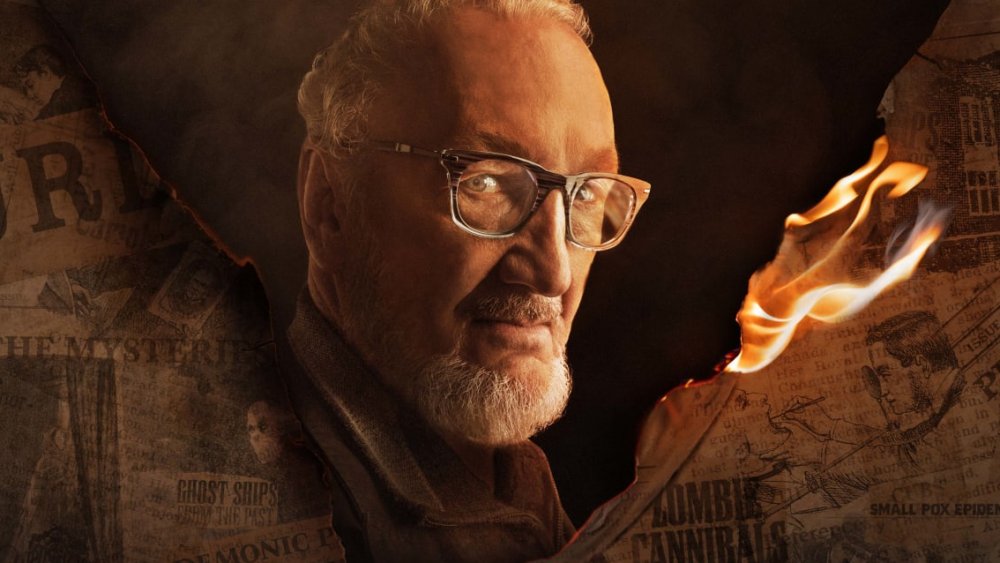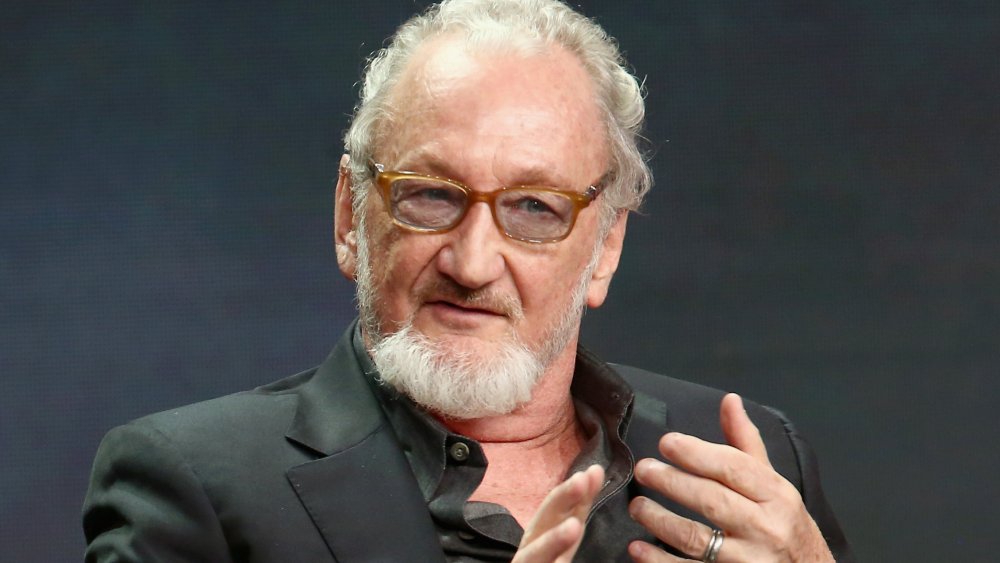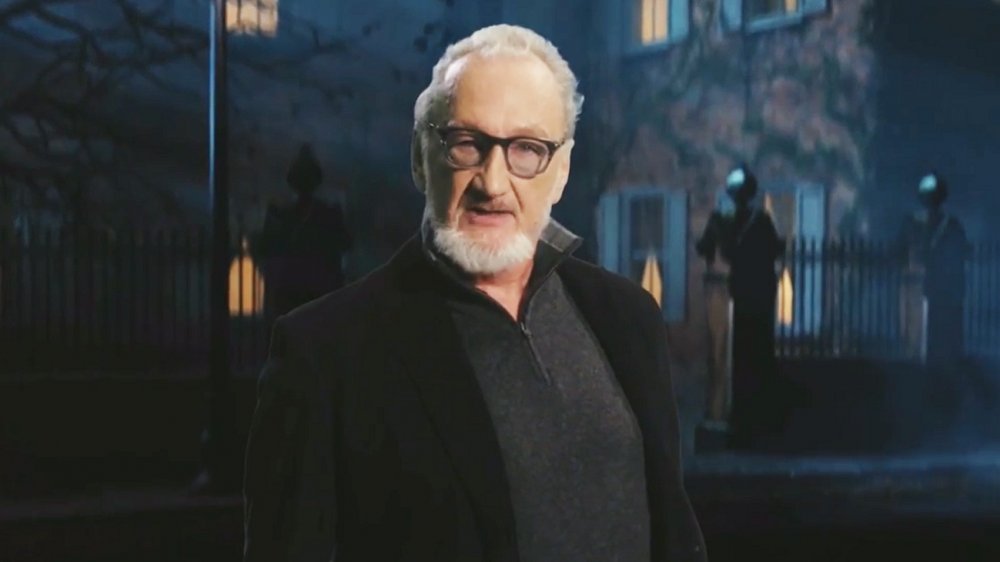The Untold Truth Of Robert Englund's New Scary Show - Exclusive
Robert Englund is best known for playing disfigured child murderer Freddy Krueger in the Nightmare on Elm Street horror franchise. But now, he's added a new role to his terror-filled repertoire: the host of True Terror on the Travel Channel.
Season 1 of the series premiered this spring, featuring reenactments of scary stories from across the United States throughout history. Each hour-long episode features a trilogy of true tales ripped straight from the headlines from days long gone — such as a New Orleans teenager who was buried alive, a North Carolina man tormented by a prophetic countdown to his doom, and small Pennsylvanian town terrorized by a demonic beast.
In an exclusive interview with Looper, Englund opened up about how True Terror came together and what it's really like hosting a television series, revealing the untold truth of his scary new show.
The idea behind the concept
Both on the surface and behind the scenes, True Terror is noticeably influenced by the classic TV show Unsolved Mysteries hosted by Robert Stack. "One of the producers was very influenced by that show," Englund says. "He wanted to do a contemporary version of it, but even darker. We can get away with a little more now on cable. We can be a little darker."
To find these tall tales, a research team rolled up their sleeves and dug into the past, combing newspapers for creepy legends and lore. They found fantastical tales about ghosts, strange beasts, serial killers, and everything in between.
"The idea was to find these strange, dark stories that were actually reported in newspapers in the past," Englund tells Looper. "These days, Americans are less superstitious than we were 100 or 150 or even 50 years ago. We're more sophisticated now. But at one point, we were more open to this kind of reporting, so these stories had a certain validity and credibility." He adds, "And because they're historical, you have some distance from them. You can look back and see what Americans believed at a certain time, and the kind of tabloid news that they liked 100 years ago."
Still, some stories are steeped in truth, such as an unsettling segment about the smallpox epidemic that swept the United States in the 1800s. In it, a teenager from New Orleans was believed to have died from the disease, when in fact he was really still breathing when put in a coffin and buried alive.
"The fear of being buried alive is universal," Englund says. "Along with suffocating, falling, drowning ... these are all dreams that everybody has at some point in their life. I know about this not because I play Freddy Krueger, but because I once took a class at UCLA about dream analysis where they talked about how everybody shares certain primal fears. And, of course, we've seen it so many times in horror movies, the dirt hitting the coffin with somebody trapped inside alive. It has become somewhat of a staple in horror movies, because it's so universal."
Not only are many of the fears revealed on True Terror commonplace, some of them are also still relevant today. "It's a dark coincidence that the 'buried alive segment,' as I call it, deals with a previous epidemic in the United States," Englund says. "It's close to what's going on now [with the coronavirus pandemic]. It gives us a sense that we've been through this before, and we'll get through it again."
The challenges — and expectations — of a TV show host
On True Terror, Englund is both the host and the narrator, where his distinctively sinister voice only adds to the already spine-chilling plot of each short story. As seamless as he makes it seem, it's a tough job to master.
"True Terror is fun, but it's also challenging," he admits. "I'm dealing with the challenge of blending the roles of on-camera host and off-camera narrator. I have to make these decisions about when to be theatrical and when to be conversational. And I'm taking cues from the guy that hosts Dateline [Lester Holt]. He does such a good job. It's tricky. But I like the challenge."
And if the series gets a second season, Englund hopes to make his role even more demanding by blending himself into the actual storylines. "I want to do more," he says. "Like the old Twilight Zone with Rod Serling. He would actually be in the episode and wrap it up for you very poetically. I'd love to be included in some of the segments. Like if we're on location in some 300-year-old barn in Gettysburg during the Civil War and telling a ghost story. The camera could move over and find me in the corner of the hayloft holding a 150-year-old pitchfork."


